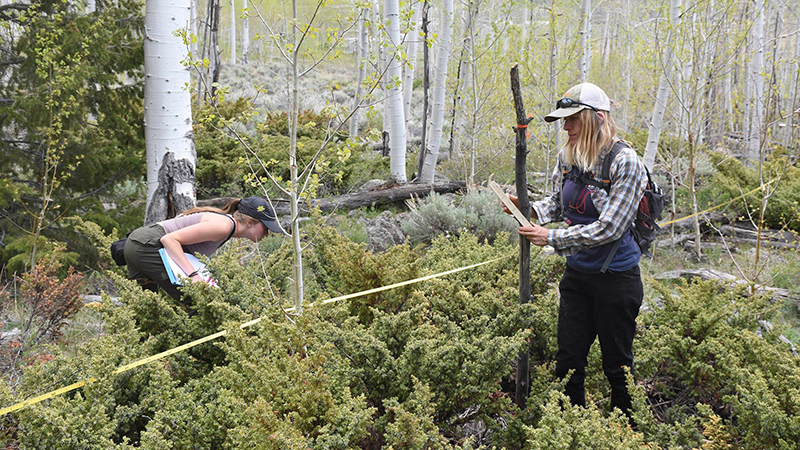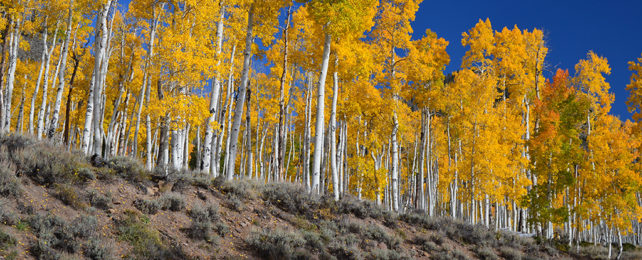While the Pando colony looks like a tightly packed swathe of aspen trees, it's largely considered to be one gigantic plant.
One of the heaviest, oldest, and largest organisms in the world, in fact, emerging from a single, complex root system covering some 100 acres (more than 430,000 square meters).
Known as The Trembling Giant, the organism is in trouble, with a new study identifying ways in which 'the one-tree forest' is fracturing into smaller individuals.
There are various threats to Pando, including disease and climate change, but the main one highlighted here is the effects of browsing deer and cattle chewing up new tree sprouts and preventing dying trees from being replaced.

This issue has been brought up before – but fencing designed to keep out animals hasn't been fully successful in its aims, the new study reports. A new approach is going to be needed to preserve Pando for future generations if current management strategies are failing, as this new study suggests.
"Findings show that the genetically uniform Pando is 'breaking up' because of herbivory and fencing," writes ecologist Paul Rogers, from Utah State University, in his published paper.
"Initial successes within fenced zones are tempered by nearly half of Pando that remains unprotected from chronic wild and domestic herbivory."
After analyzing 64 different plots across Pando, around 16 percent of it is well protected by fencing, Rogers reports – with new trees growing quickly enough to replace older ones. Across another third of the area, the fencing has recently been reinforced after falling into disrepair, and the forest is still dying in these sections.
As for the 50 percent or so of Pando that isn't fenced at all, deer and cattle continue to eat up most of the new sprouts that appear. As mature trees die off without being replaced, the amount of sunlight reaching ground level increases, changing the composition and biodiversity of the organism.
According to Rogers, fencing is splitting Pando into three sections, each taking their own ecological course rather than forming a single, resilient forest. While unfenced areas are dying most rapidly, even the growth patterns of well-fenced areas are at odds with how the forest has developed over its long history.
"I think that if we try to save the organism with fences alone, we'll find ourselves trying to create something like a zoo in the wild," says Rogers.
"Although the fencing strategy is well-intentioned, we'll ultimately need to address the underlying problems of too many browsing deer and cattle on this landscape."
The new research follows up a 2018 study that Rogers was involved in, and many of the same areas have been assessed to check on growth. An earlier study from 2017 had identified some signs of recovery in fenced areas.
But Rogers says of his latest findings that the fragmentation of Pando could have a knock-on effect on hundreds of different plant and animal species since aspen forests support high levels of biodiversity.
What the solution is isn't immediately clear, but it looks likely that greater management of deer, cattle and even human numbers around Pando are going to be crucial in ensuring its conservation. As is usually the case, more detailed monitoring will be helpful too.
As conservation projects go, Pando is relatively small – but it's indicative of the way that human interactions are disturbing a delicate natural balance. It could even act as a test case for conservationists looking to protect similar regions of the world.
"Lessons from Pando may be applied to struggling, often species rich, aspen systems facing similar challenges globally," writes Rogers.
The research has been published in Conservation Science and Practice.
